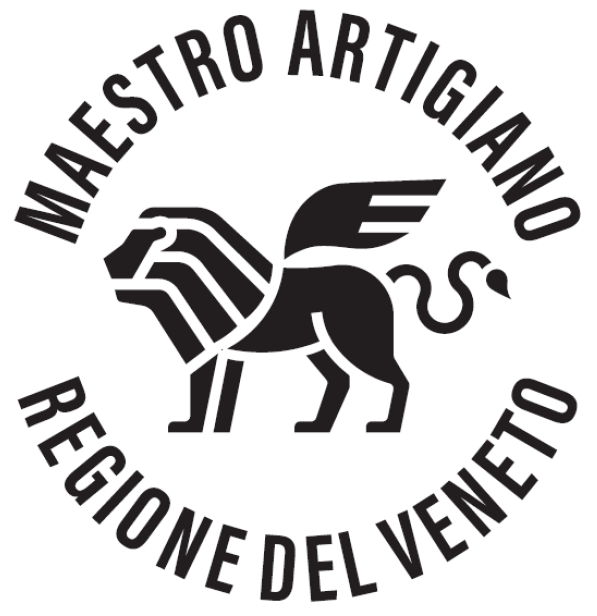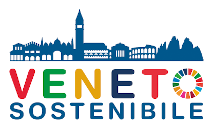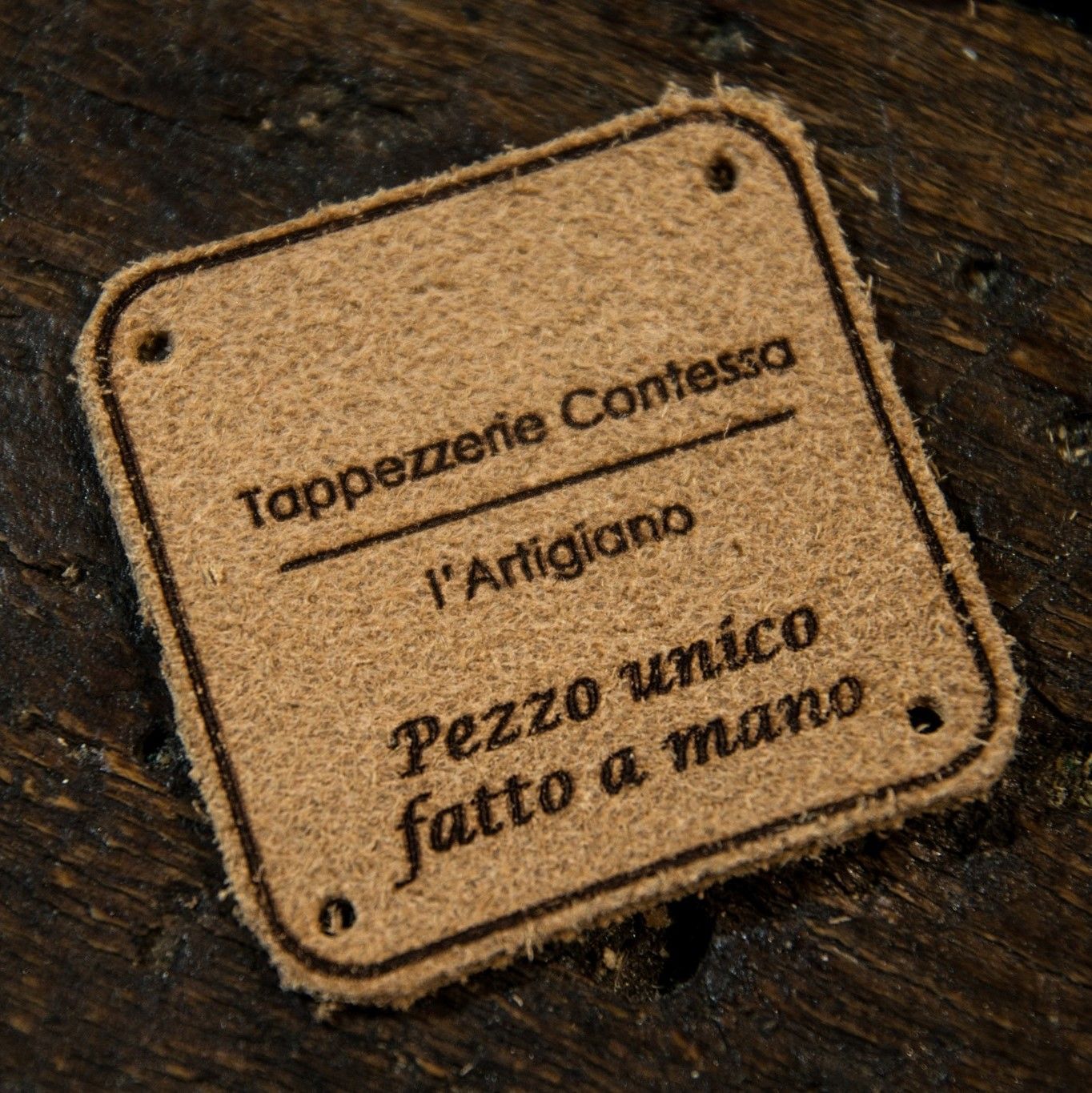Eco-sustainability
Recovery, recycling,
the "never throw away".
Craftsmen are often referred to as serial hoarders.
Everything is more than logical and natural when you are used to working with beautiful and well-made things, you can never get tired of it and above all you never throw it away...
Tessili fiber
We talk more and more about eco-sustainability but this term is used improperly. True sustainability starts from what the earth produces.
Natural fibers have always been fruits that the earth offers us: linen, cotton, hemp, silk... And they can be fibers that we use to cover our home.
Sustainable textiles
Textile industries have also been changing manufacturing processes for some time to improve sustainability and today we have various fabrics available that come from recycled fibers.
La lana
Wool, one of the ancient and most ductile fibers we know, can be used in various ways.
In the furniture sector it offers us a pleasant and comfortable softness to the touch.
CHARACTERISTICS
Natural vegetable or animal textile fibres
The work
"Wool fibre" is a natural animal fiber that comes mainly from the fleece of sheep and, in some cases, from other species of animals such as goats, camels, alpacas and rabbits. Wool is widely used for the production of fabrics and other materials. Here is some key information about wool fiber:
Origin: Wool is obtained from the fleece of long-haired animals, such as sheep and goats. Raw wool is removed from animals through a process called shearing.
Properties: Wool is known for its softness, warmth and thermal insulation. It has the ability to retain body heat, which makes it an ideal material for producing winter clothing such as sweaters, coats and scarves. Wool is also breathable and can absorb a significant amount of moisture without feeling wet.
Uses: Wool is used for a wide range of textile products, including garments, blankets, rugs, coats, dresses and sweaters. It is valued for both its functional and aesthetic uses.
Varieties: There are different varieties of wool, each with specific characteristics in terms of softness, fiber length and colour. For example, Merino wool is famous for its softness and is often used for high-quality clothing.Manufacturing process: After shearing, the raw wool is cleaned to remove dirt and grease. Subsequently, the fibers can be spun and woven to create woolen fabrics.
Sustainability: Wool production can be considered relatively sustainable if managed responsibly. The animals from which the wool comes can be maintained in an environmentally sustainable way, and the wool itself is biodegradable.
Wool is a valuable material with a long history in the textile industry. It is known for its durability and classic look, making it a popular choice for a variety of textile products.
Cotton
“Cotton fiber” refers to the natural plant fibers produced by cotton plants. Cotton is one of the most widely used natural fibers in the world for the production of textiles and other materials. Here is some key information about cotton fiber:
Origin: Cotton is primarily produced from the cotton plant, known by the scientific name "Gossypium." The fibers are obtained from the hairy seeds of the plant.
Properties: Cotton fibers are notable for their softness, lightness and comfort. They are breathable and absorb moisture well, making them ideal for clothing, especially in warm climates.
Uses: Cotton is used for a wide range of products, including clothing (such as T-shirts, pants, dresses, underwear), sheets, towels, home textiles and much more. It is also used in the production of industrial goods such as filters and technical textiles.
Cultivation: Cotton is grown in many parts of the world, with major producing regions including the United States, India, China, and Brazil. Growing cotton requires a significant amount of water and pesticides, which can have impacts on the environment.
Varieties: There are different varieties of cotton, each with specific characteristics. Some of the best-known varieties include Pima cotton, Egyptian cotton and organic cotton.
Production process: After harvesting, the cotton fibers are separated from the seeds through a process called ginning. Next, the fibers can be spun to create cotton threads that will be used for fabrics and other products.
Seta
"Silk fibre" is a very valuable natural fiber of animal origin produced by some types of insects, mainly the silkworm (Bombyx mori). Silk is known for its softness, luster and luxurious feel to the touch. Here is some key information about silk fiber:
Origin: Silk is produced by silkworm larvae. These insects spin cocoons around themselves during their larval stage to protect themselves as they transform into moths. Silk fibers are extracted from cocoons.
Properties: Silk is renowned for its natural shine, which is due to the microscopic structure of its fibres. It is also incredibly soft to the touch, lightweight and thermoregulating. This means that silk can help keep you warm in the winter and cool in the summer.
Uses: Silk is used for a wide range of luxury products, including dresses, bedding, scarves, ties, lingerie, dance costumes and furnishing fabrics. It is appreciated for its beauty, comfort and elegance.
Varieties: There are several varieties of silk, each with unique characteristics. Mulberry silk is one of the most common and valuable varieties, while there are also other varieties such as tussah (or wild) silk and eri silk.
Production Process: The silk production process begins with the cultivation of silkworms and feeding them with mulberry leaves. After weaving the cocoons, they are immersed in hot water to soften the natural glue that holds the fibers together. The fibers are then pulled and spun to create silk yarn.
Sustainability: Silk production can vary in terms of sustainability depending on the agricultural and farming practices used. However, silk is biodegradable and can be considered a more eco-friendly material than many synthetic fibers.
Silk has been prized for centuries for its beauty and luxurious feel. It is a precious material that requires special care in its production and maintenance, but its qualities make silk products very desirable for those seeking comfort and style.
This time
"Flax fibre" is a natural fiber of plant origin obtained from the flax plant
(Linum usotatissimum). This fiber has a long history of use in the textile industry and is known for its unique characteristics. Here is some key information about flax fiber:
Origin: Flax fiber is produced from the stems of the flax plant, which is cultivated throughout the world. The process of extracting flax fibers involves the removal of the woody part and pulp of the plant to isolate the fibers.
Properties: Linen is known for being a strong and durable material. It has a smooth surface and a natural matte shine. Linen fibers are breathable and absorb moisture well, making them suitable for summer clothing. Additionally, linen can become softer and more comfortable with time and washing.
Uses: Linen is used for a variety of textile products, including clothing (such as shirts, pants, and light dresses), bedding (sheets and pillowcases), tablecloths, curtains, and furnishing fabrics. It is known for its rustic and elegant appearance.
Sustainability: Flax cultivation is considered relatively sustainable. The flax plant requires less water and pesticides than some other textile crops. Furthermore, linen is biodegradable and can be recycled. The linen production process, however, requires significant energy to extract and process the fibers.
Varieties: There are several varieties of linen, each with unique characteristics. High-quality linen is often called "good-quality linen" and is known for its purity and uniformity.
Maintenance: Linen needs specific care. It tends to crease easily, but many people appreciate its creased appearance as part of its natural appeal. It is important to follow the washing instructions for linen to keep it in good condition.
Linen is a versatile material with a long tradition in the world of fashion and furniture. Its unique properties make it suitable for a variety of purposes, and many people appreciate its natural elegance and rustic appearance.
Hemp
"Hemp fiber" is a natural fiber obtained from the hemp plant (Cannabis sativa). Hemp is a versatile plant that has been cultivated for thousands of years around the world for textile, industrial and food purposes. Here is some key information about hemp fiber:
Origin: Hemp fiber is produced from the fibers present in the stem of the hemp plant. These fibers are extracted through a maceration process, which separates the fibrous tissues from the rest of the trunk.
Properties: Hemp fiber is strong and durable. It has a natural shine and is slightly rough to the touch. Hemp fibers are also remarkably resistant to moisture and wear, making hemp fabrics ideal for summer clothing and hard-wearing items.
Uses: Hemp fiber is used for a variety of textile products, including clothing (such as pants, shirts, and lightweight dresses), bags, home textiles, tablecloths, sheets, and even cordage. It is known for its natural and rustic look.
Sustainability: Hemp cultivation is considered ecologically sustainable. The plant requires less water than other textile crops such as cotton and grows quickly without the need for pesticides or chemical fertilizers. Hemp is also biodegradable.
Varieties: There are different varieties of hemp, each with specific characteristics in terms of fiber length and resistance. Some varieties are particularly suitable for textile purposes, while others are grown for hemp seed production or industrial uses.
Industrial sector: In addition to textile use, hemp is used in industry for the production of paper, biodegradable plastics, oils and lubricants, building materials and much more. Its eco-friendly properties make it an attractive resource for a range of sustainable industrial applications.
In recent years, there has been renewed interest in hemp due to its sustainable qualities and versatility. Many people are looking to hemp-based textiles and materials as a greener alternative to synthetic or petroleum-based materials.
Kapoc
"Kapok fibre" is a natural fiber of plant origin that comes from the fruit of the kapokier (Ceiba pentandra), a tree native to the tropical regions of Africa, Central America and South America. This fiber is known for its light, soft and insulating characteristics. Here is some key information about kapok fiber:
Origin: Kapok fiber is obtained from kapokier fruits, which contain small masses of light, fluffy white fibers. These fibers are manually harvested from the fruits and then treated to eliminate impurities.
Properties: Kapok fiber is incredibly light and has a hollow structure making it ideal for thermal and acoustic insulation. It is also highly water-repellent, meaning it repels water and dries quickly.
Uses: Traditionally, kapok fiber has been used to stuff pillows, life jackets, jackets and mattresses. Because of its buoyancy properties, it has been used for the production of life jackets and inflatable life jackets. However, today it has been largely replaced by synthetic materials for these purposes.
Sustainability: Kapok is a sustainable resource as the plant grows rapidly in tropical climates and requires few agricultural inputs such as pesticides or fertilizers. It is biodegradable and environmentally friendly.
Arm
Ramie is a perennial herbaceous plant native to East Asia and has been cultivated for centuries for its textile fibers. Here is some key information about ramie fiber:
Origin: Ramie fiber is extracted from the inner part of the bark of the ramie plant. The plant is generally grown in tropical or subtropical climates.
Properties: Ramie fiber is known for its strength and durability. It is one of the strongest natural fibers, and is even stronger than linen and cotton. It has a natural shine and silk-like appearance.
Uses: Ramie fiber is used for a variety of textile products, including clothing (such as shirts, jackets, and light suits), furnishing fabrics, tablecloths, and table linens. It is prized for its endurance and ability to maintain shape.
Sustainability: Growing the ramie plant is considered relatively sustainable, requiring fewer pesticides and fertilizers than other textile crops. Additionally, the roots of the ramie plant help prevent soil erosion. Ramie fiber is biodegradable.
Treatment: Ramie fiber can be difficult to work with due to its natural stiffness. However, with time and washing, it tends to become softer and more pleasant to the touch.
Coloring: Ramie fiber can be dyed easily, which gives it versatility in terms of design and color.
Despite its excellent strength and durability properties, ramie fiber is not as commonly used as cotton or linen in many parts of the world. However, it is prized for its unique characteristics and is gaining popularity in sustainable, high-quality textile products. Its resistance makes it particularly suitable for clothing items that require long life, such as jackets and dresses.
Million
"Jute fibre" is a natural textile fiber obtained from the jute plant (Corchorus).
Jute is a broad-leaved plant grown mainly in tropical regions of Asia, Africa and Central America. Here is some key information about jute fiber:
Origin: Jute fiber is extracted from the inner stem of the jute plant. The stems are harvested, soaked in water to soften the fibers, and then scraped to separate the fibers from the rest of the plant.
Properties: Jute fiber is known for its strength and durability. It is one of the most resistant textile fibers and can withstand contact with water without suffering significant damage. However, it is also a rough fiber to the touch.
Uses: Jute fiber is used for a variety of textile products, including sacks, cordage, carpets, coarse fabrics, bags, furnishing items and more. It is often used for industrial purposes due to its strength and durability.
Sustainability: Jute is considered a sustainable fiber as it grows quickly and requires fewer pesticides and fertilizers than other textile crops. Additionally, the jute plant can help prevent soil erosion due to its deep root system.
Coloring: Jute fiber can be easily dyed, which offers many possibilities in terms of design and color.
Rustic Appearance: Jute fiber has a rustic and natural appearance, and is prized for its raw and authentic appearance.
Traditional uses: Jute is often associated with traditional products such as coffee bags or other food products, but in recent years it has also been used in high fashion textiles and household items.
Jute fiber is an example of a natural textile fiber with a long history of use in many cultures. It is particularly valuable in industries where strength and durability are important, such as in the agricultural industry and bag manufacturing. Furthermore, the growing focus on sustainability has led to a re-evaluation of jute as an eco-friendly and versatile material in many sectors.
Sisal
"Sisal fibre" is a natural textile fiber obtained from the leaves of the sisal plant (Agave sisalana), a succulent plant native to Mexico, but cultivated throughout the world, mainly in tropical and subtropical regions. Sisal fiber is known for its strength and durability and is used in a variety of applications. Here is some key information about sisal fiber:
Origin: Sisal fiber is extracted from the leaves of the sisal plant. These leaves contain long, tough fibers that are extracted through a scraping and washing process.
Properties: Sisal fiber is one of the most resistant fibers among natural textile fibers. It is durable, wear-resistant and can withstand moisture without degrading. However, it can be rough to the touch and is not known for its softness.
Uses: Sisal fiber is used for a variety of purposes, including the production of rope, cordage, carpets, doormats, sacks and bags, coarse fabrics, brushes, and even some industrial applications. Its strength makes it ideal for applications requiring a robust fiber.
Sustainability: Sisal cultivation is considered sustainable as the plant is drought resistant and grows quickly without the need for pesticides or chemical fertilizers. The plant's deep roots also help prevent soil erosion.
Coloring: Sisal fiber can be easily dyed in various colors, which gives it versatility in terms of design and applications.
Agricultural sector: Sisal fiber has traditionally played an important role in agriculture, particularly in the packaging of agricultural products such as coffee and cocoa. However, today it is used in many other applications.
Sisal fiber is a versatile and durable material that finds use in a number of industries. While it is not known for its softness, it is prized for its strength and durability, making it ideal for applications requiring strength and wear resistance.
Nettle
"Nettle fibre" is a natural textile fiber obtained from the nettle plant (Urtica dioica).
Nettles are herbaceous plants known for their leaves covered in stinging hairs that can cause irritation on the skin. However, when treated properly, nettle fibers can be used to produce strong, durable fabrics. Here is some key information about nettle fiber:
Origin: Nettle fiber is extracted from the internal stem of nettle plants. To obtain the fibers, the stem is macerated and then scraped to separate the fibers from the external fibrous part.
Properties: Nettle fiber is known for its strength and resistance. It is considered one of the strongest natural fibers, even stronger than linen or cotton. However, nettle fibers can be rough to the touch.
Uses: Nettle fibers are used to make durable fabrics, including clothing, bags, cordage, furnishing fabrics and even fishing nets. They are particularly suitable for applications requiring strength and durability.
Sustainability: The cultivation of nettle plants is considered sustainable as it requires few agricultural inputs. Nettle plants grow robustly and can be grown without the use of pesticides or chemical fertilizers. Nettle fiber is biodegradable and environmentally friendly.
History: Nettle fibers have a long history of use in the textile industry, dating back thousands of years. In the past, they were especially common in Europe for the production of clothing and durable fabrics.
Treatment: Nettle fibers must be treated properly to make them more flexible and less rough. This process can include the beating, softening and spinning process. Nettle fiber is an example of a less common natural textile fiber, but one that offers significant advantages in terms of strength and sustainability. However, due to the manufacturing process required and the rough characteristics of the fibers, its production is limited compared to more common fibers such as cotton or linen.
Broom
The broom belongs to the Leguminosae or Papillonaceae family (from the Latin papilionis = butterfly) as its flowers resemble a butterfly with spread wings.
It is an evergreen shrub with yellow flowers that can reach up to 3 meters in height.
In Italy, around 20 different species of broom grow spontaneously. The most widespread are:
Spanish broom or odorosa (Spartium Junceum)
Broom or charcoal burner (Cytisus scoparium)
It is possible to obtain textile fibers from both species, but the broom provides better quality fibres.
Phoenicians, Carthaginians, Greeks and Romans used it as a fiber plant to produce mats, ropes and other artefacts.
Harvesting: after the flowers had fallen, the longest and largest worms were chosen;
Boiling: the broom bundles were boiled for almost an hour together with ash or caustic soda to soften the stems;
Pulping: the broom bundles were left to soak in running water for a week to further soften the fibres;
Defibration: with this operation the fiber was separated from the canapules;
Beating: it was used to refine the fibers by eliminating the woody parts. The fibers were beaten with a wooden mallet;
Carding: this was carried out with special combs to eliminate any woody waste;
Spinning: it was used to transform the fiber into yarn and took place via the distaff which served to contain the fiber and the spindle which twisted it on itself.
Hibiscus
Hibiscus (Hibiscus spp.) is a plant that produces showy, colorful flowers and is known for its ornamental and medicinal properties, but it is not a common source of textile fibers. However, in some regions of the world, especially in Africa and Asia, hibiscus fibers have had limited use in the manufacture of traditional textile products.
Hibiscus fibers are generally obtained from the bark of the plant. The process involves extracting and processing the bark to obtain fibers that can be spun and woven into fabrics. These fibers are often used to make ropes, baskets, mats and other handcrafted products.
It is important to note that, compared to other more common textile fiber sources such as cotton, linen or hemp, hibiscus fibers tend to be less durable and coarser. Therefore, its use is more typical in local communities where traditional textile manufacturing techniques are valued and where the availability of modern materials is limited.
In short, although hibiscus fibers have been used in some cultures for textile production, they are not a major source of textile fibers in modern industry and their use is more common in traditional and local contexts.









